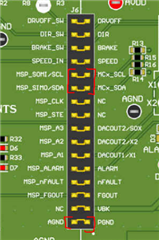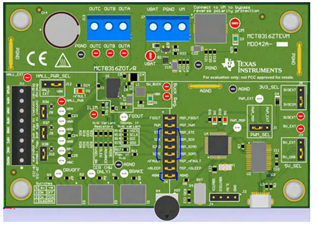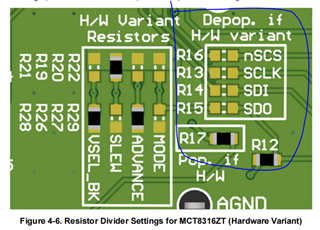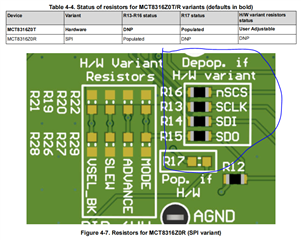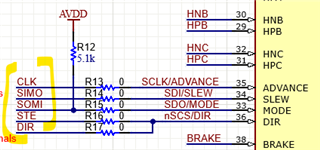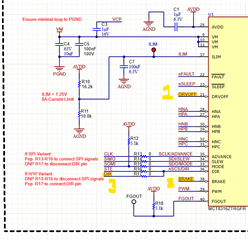Other Parts Discussed in Thread: MCT8316A, , MCT8316ZTEVM, MCT8316Z
Tool/software:
Hi,
I am using an Non-TI MCU to interface with the MCT8316A driver on the MCT8316AEVM board. Can you please advise me how to setup all the pins on J6 such that I can bypass the MSR430 and interface with MCT8316A directly?
thank you!
Ryan


